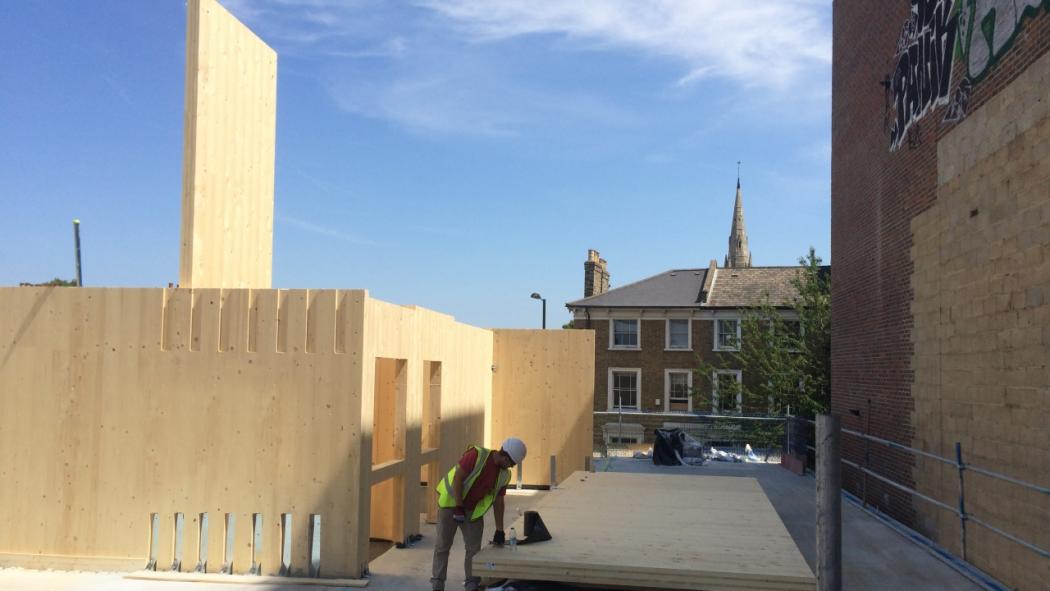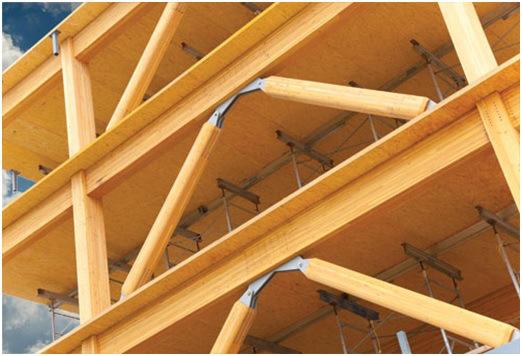OLYMPIA, WA - Laying out the case for wood construction over steel, concrete and bricks, the Innovative Wood Products Collaborative notes that as timber grows, it soaks up carbon dioxide. That carbon is stored in wood products, a carbon sink that mitigates climate change.
About half of the dry weight of wood is stored carbon; while 16 percent of global fossil fuel goes into making steel, bricks and concrete. At www.TheMostNaturalResource.com. details are presented about these and other benefits of building with wood.
The Innovative Wood Products Collaborative launch its website - www.TheMostNaturalResource.com - Sept. 11.
The new site is the product of a collaboration between Washington and Oregon sustainable forestry managers, wood products manufacturers, conservationists, academics and architects to highlight the latest information about using innovative wood products from sustainably managed forests.
Wood – the only building material that is grown by the power of the sun – is a renewable resource that has a low carbon and energy footprint. Using wood from sustainably managed forests will significantly reduce carbon emissions from the building sector.
As timber grows, it soaks up carbon dioxide - about half the dry weight of wood products - a carbon sink that mitigates climate change.
According to a Yale University study, substituting wood for more energy-intensive building materials would reduce global carbon dioxide emissions by 14 to 31 percent because wood consumes much less energy than concrete or steel construction.
"Wood construction is incredibly fast and effective, with the added benefit of producing a building that stores carbon rather than emitting it," says Canadian architect Michael Green. "The only way to achieve a net-zero building is to build with wood."
As timber grows, it soaks up carbon dioxide through photosynthesis, and that carbon is stored in wood products. This creates a carbon sink that helps mitigate climate change. About half of the dry weight of wood is stored carbon. In contrast, 16 percent of global fossil fuel consumption goes into manufacturing steel, concrete and bricks.
"This collaboration between Oregon and Washington sustainable forest growers and manufacturers is capturing the recent wave of recognition among architects, builders and conservation groups that wood products have real carbon benefits, and can be used in tall buildings," says Mark Doumit, executive director of the Washington Forest Protection Association.
ARTICLE Tallest Wood Building On the Rise Cross laminated timbers are being used in mass quantities for the tallest wood building so far: a 121-unit, 10-story apartment complex in London. | 
|
Wood products are carbon-negative because they sequester and store carbon," says Joseph Mayo, a designer at Mahlum Architects in Seattle. "There is no other natural building material like wood. Increasing the use of wood also supports local jobs and industry."
"The forest landowners and lumber manufacturers in the Pacific Northwest are the largest supplier of wood building materials in the nation," says Paul Barnum, executive director of the Oregon Forest Resources Institute. "Using those wood products in new and better ways will benefit both the environment and the economies of Oregon and Washington."
Wood's strength-to-weight ratio is comparable to concrete and steel. Engineered wood products such as cross-laminated timber (CLT), glue-laminated timber (glulam) and laminated veneer lumber (LVL) make it possible to build taller wood structures. These mass timber construction materials are highly fire-resistant and cost-effective. Prefabricated CLT panels can also be installed quickly, speeding up construction time.
"As global demand for wood continues to increase with population, we need to be sourcing our timber from sustainably managed forests," says Thomas Maness, dean of the Oregon State University College of Forestry. "The most environmentally sustainable place to grow wood is right here in the Pacific Northwest."
About the Innovative Wood Products Collaborative: The Innovative Wood Products Collaborative is co-sponsored by the Oregon Forest Resources Industries and the Washington Forest Protection Association to promote the use of wood from sustainably managed forests in the Pacific Northwest.
About the Oregon Forest Resources Institute: The Oregon Legislature created the Oregon Forest Resources Institute in 1991 to advance public understanding of the state's forest resources and to encourage environmentally sound forest management through training and other educational programs for forest landowners. OFRI is funded by a dedicated harvest tax on forest products producers. For more information, go to OregonForests.org.
About the Washington Forest Protection Association:
The Washington Forest Protection Association is a trade association representing private forest landowners in Washington state. Members of the 100-year-old association are large and small companies, individuals and families who practice sustainable forestry in Washington's private forests on about 4 million acres of forestland. WFPA is committed to advancing sustainable forestry in Washington to provide forest products and environmental benefits to the public. For more information, go to wfpa.org.
SOURCE Innovative Wood Products Collaborative







Have something to say? Share your thoughts with us in the comments below.